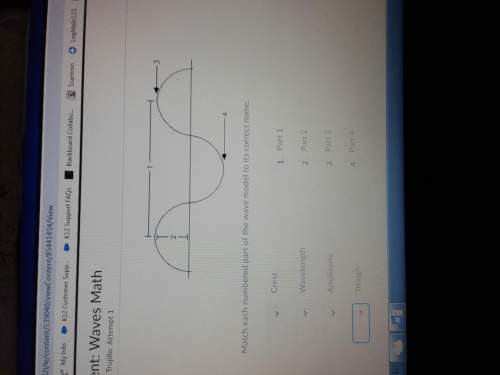
Physics, 02.02.2020 20:49 lalaboooobooo
Asoccer player practices kicking the ball into the goal from halfway down the soccer field. the time it takes for the ball to get to the goal from the time it is kicked averages about three seconds. the soccer field is 90 meters long. the player wants to know the average velocity of the ball. is there enough information to calculate this?

Answers: 3
Another question on Physics


Physics, 22.06.2019 02:00
Chapter 23, problem 075 the figure shows a geiger counter, a device used to detect ionizing radiation (radiation that causes ionization of atoms). the counter consists of a thin, positively charged central wire surrounded by a concentric, circular, conducting cylindrical shell with an equal negative charge. thus, a strong radial electric field is set up inside the shell. the shell contains a low-pressure inert gas. a particle of radiation entering the device through the shell wall ionizes a few of the gas atoms. the resulting free electrons (e) are drawn to the positive wire. however, the electric field is so intense that, between collisions with gas atoms, the free electrons gain energy sufficient to ionize these atoms also. more free electrons are thereby created, and the process is repeated until the electrons reach the wire. the resulting "avalanche" of electrons is collected by the wire, generating a signal that is used to record the passage of the original particle of radiation. suppose the radius of the central wire is 24 âµm, the inner radius of the shell 2.3 cm, and the length of the shell 14 cm. if the electric field at the shell's inner wall is 2.8 ă— 104 n/c, what is the total positive charge on the central wire?
Answers: 1

Physics, 22.06.2019 03:30
As part of an industrial process, air as an ideal gas at 10 bar, 400k expands at steady state through a valve to a pressure of 4 bar. the mass flow rate of air is 0.5 kg/s. the air then passes through a heat exchanger where it is cooled to a temperature of 295k with negligible change in pressure. the valve can be modeled as a throttling process, and kinetic and potential energy effects can be neglected. (a) for a control volume enclosing the valve and heat exchanger and enough of the local surroundings that the heat transfer occurs at the ambient temperature of 295 k, determine the rate of entropy production, in kw/k. (b) if the expansion valve were replaced by an adiabatic turbine operating isentropically, what would be the entropy production? compare the results of parts (a) and (b) and discuss.
Answers: 3

Physics, 22.06.2019 11:30
You've already seen the value of 9.8 in this lesson. what's this value called? what quantity does it represent?
Answers: 2
You know the right answer?
Asoccer player practices kicking the ball into the goal from halfway down the soccer field. the time...
Questions






History, 01.08.2019 11:00

Mathematics, 01.08.2019 11:00


Mathematics, 01.08.2019 11:00



Mathematics, 01.08.2019 11:00



Biology, 01.08.2019 11:00

History, 01.08.2019 11:00

Chemistry, 01.08.2019 11:00






